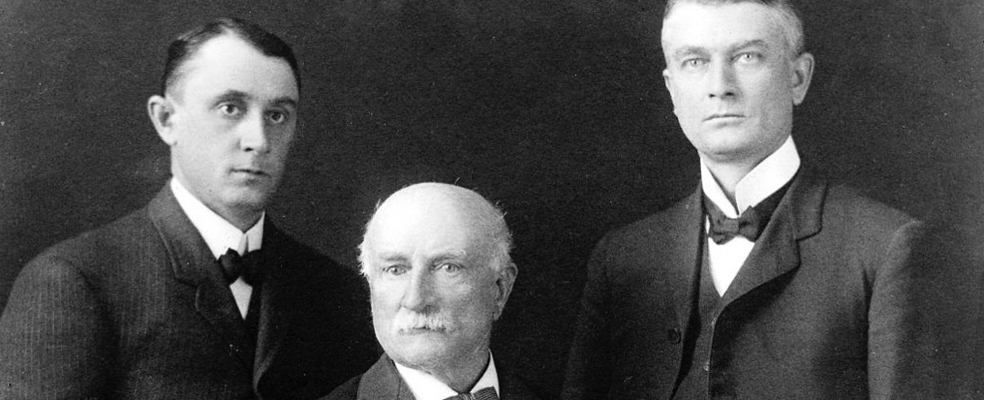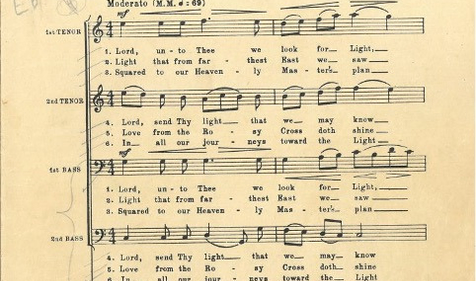In November 2022, the SRMML named five new inductees into The Masonic Hall of Fame, including William W. Mayo, William J. Mayo, and Charles H. Mayo. William W. Mayo and his sons are best known as the three physicians who established and fostered the medical practice that became the Mayo Clinic, now renowned for its research, education, and medical care.
In 2022, The Scottish Rite Masonic Museum & Library (SRMML) unveiled its latest exhibition: "The Masonic Hall of Fame: Extraordinary Freemasons in American History." Visitors to the museum can learn about inspiring American Freemasons and discover the rich history of Freemasonry in the United States. The exhibition honors Masons, both past and present, who have made outstanding contributions to American history, and will be on display through October 25, 2024, at Supreme Council headquarters in Lexington, Massachusetts.
In November 2022, the SRMML named five new inductees into The Masonic Hall of Fame, including William W. Mayo, William J. Mayo, and Charles H. Mayo. William W. Mayo and his sons are best known as the three physicians who established and fostered the medical practice that became the Mayo Clinic, now renowned for its research, education, and medical care.
Though it began with humble origins in Rochester, Minnesota, today The Mayo Clinic and the Mayo Foundation for Medical Education and Research are dedicated to diagnosing and treating nearly every known illness. The Mayo family’s contributions to medicine are revered and celebrated throughout the world.
Dr. William Worrall Mayo
William W. Mayo was born on May 31, 1819, in Eccles, Lancashire, England. He studied science in Manchester under the famous chemist and physicist John Dalton, who formulated the modern atomic theory. William came to the United States in 1846, first working as a pharmacist at Bellevue Hospital in New York City before moving to Lafayette, Indiana.

Dr. William W. Mayo studied at Indiana Medical College in La Porte, Indiana, learning medicine through the college and during training under a local physician. In 1851, he wedded Louise Abigail Wright, with whom he would raise a family, including daughter Gertrude and sons William J. and Charles.
In 1863, he relocated the family to Rochester, MN, and began his surgical practice. Dr. William W. Mayo was well-known for his persistent pursuit of the most up-to-date medical knowledge, often traveling around the country to learn from other doctors and surgeons. He applied this knowledge in caring for his patients and passed this professional trait down to his sons and other colleagues he practiced beside.
He spent the next 40 years working in medicine and getting involved in municipal politics. He was even elected in the 1880s to be the city mayor, alderman, and school board member. Dr. William W. Mayo fought hard against corruption, advocated for a municipal water supply, and served on the local Health Board. He also oversaw the planning of the first City Hall and served in the Minnesota State Senate from 1891 to 1895.
In 1883, Dr. William W. Mayo notably treated casualties of a disastrous tornado in Rochester, most of whom needed intensive care. The city lacked a full-fledged hospital, and he and the sisters of St. Francis treated many of the wounded in a local library. Both of William W.’s sons were able to step in and help care for patients as well. William J. had just completed medical school, and Charles was in his final year.
The Sisters and Three Physicians
In the aftermath of the tornado, the sisters and Dr. William W. Mayo were convinced the city needed a legitimate hospital with proper facilities. The three Mayo doctors and the sisters set to work planning St. Mary's Hospital, which opened on October 1, 1889. When it opened, St Mary's featured 12 beds, the three Mayo doctors as surgeons, and the sisters of St. Francis as nursing and administrative staff.
From the beginning, the hospital followed the most modern approach to medicine available at the time. That included using anesthesia, reducing infection through sterilization, and other cutting-edge surgical practices that earned the hospital a reputation for positive patient outcomes. Also, in what was genuinely progressive for the era, St. Mary's Hospital welcomed patients regardless of sex, race, religion, or ability to pay for care.
The Mayo Clinic
Starting in the 1890s, the Mayo brothers, William J. and Charles, assumed control of their father's medical practice and welcomed other physicians to join them. Now a group practice, the family hired colleagues whose skills and medical philosophy complemented their own, including such prominent physicians as Augustus W. Stinchfield, Christopher Graham, Melvin C. Millet, Henry Plummer, E. Star Judd, and Donald Balfour.
Ever on the cutting edge of medicine, the Mayo brothers established a clinic that housed labs and doctors' offices in the same building, allowing for a better exchange of information and treatment for patients by enabling access to multiple specialists who could collaborate on cases.

By 1914, the hospital and the Mayo private practice were flourishing, with St. Mary's treating 8,000 patients a year. The brothers had the practice well in hand, and their father no longer needed to work to support the family. With the expanding railroad network in the west, physicians began visiting Rochester to learn at "the Mayos' clinic." That same year, “Mayo Clinic” became the hospital’s official title.
Both brothers had gained a positive reputation for their surgical skills and prowess in running the clinic, earning them both tenure as president of the American Medical Association. In 1919, William J. and Charles H. Mayo, drawing from their savings, endowed the Mayo Foundation for Medical Education and Research. The family also donated the assets of the medical practice, including land, buildings, and equipment, turning the nearly 60-year-old private partnership into a not-for-profit organization. As a result, doctors who worked for the clinic were paid a salary rather than a portion of the practice's profits. Beyond expenses, Clinic revenue supported education, research, and patient care.
The Masonic Mayos
When Dr. William W. Mayo began working as a physician in Rochester, Minnesota, in 1863, he committed himself to get involved in the community. That included joining Rochester Lodge No. 21, a space that proved essential for the development of the Mayo family practice.

In the years before the doors of St Mary's Hospital opened, Dr. William W. Mayo sought space to accommodate increasing numbers of patients who visited their offices for examination and diagnosis. In 1901, he provided loans and other assistance to the local Masonic Temple Association to help it erect a new Masonic building. Along with William W., Charles H. Mayo was a member of Rochester Lodge No. 21, which met in the new building. The Mayos saw and treated patients in their first-floor offices in the lodge building for over a decade.
In 2022, The Scottish Rite Museum and Library revealed doctors William W. Mayo, William J. Mayo, and Charles H. Mayo had been inducted into the 2023 class of The Masonic Hall of Fame.
The Mayo Legacy
Amongst their many accomplishments, the Mayo family is most celebrated for developing the integrated medical record system. They showed the medical world how essential it is for physicians of different specialties to freely and easily exchange patient information to improve treatment and health outcomes. As of 2018, over 1.2 million patients across the United States and 138 countries had been seen at Mayo Clinic facilities.

The Mayo Clinic has operated for over a century and remains focused on integrated health care, education, and research. Today, the Mayo Clinic Alix School of Medicine is one of the preeminent medical schools in the nation, boasting a highly regarded residency program. The clinic spends over $660 million yearly on research and has more than 3,000 full-time research personnel.
Visit the Supreme Council headquarters in Lexington, MA, to see The Masonic Hall of Fame: Extraordinary Freemasons in American History. This exhibit will remain on display through October 25, 2024.
Related Stories
Discover additional Scottish Rite blogs and news on this topic.



